An English village church dropped next to a Danish military base and a stone’s throw from the Royal Palace, the existence of Skt. Alban’s Church in Copenhagen is, well, unexpected, but it helps when the Princess of Wales—Alexandra of Denmark—is the daughter of the Danish king. Still, it must’ve been a tiny bit strange when the English church–designed by architect Arthur Blomfield and still the only Anglican church in Denmark—opened in 1887. After all, only 80 years earlier the British had bombed Copenhagen, burning down large swathes of the city.

So, what’s changed?
- That odd small dam in the moat was gone by the early 1900s.
- The difference in foliage is obviously striking—North American and European cities really were denuded from the 1870s to the 1920s or so before spending the last century sprouting hard.
- It’s distinctly possible that the roof was once closer to blue than its current gray, but honestly I’m not sure either way.
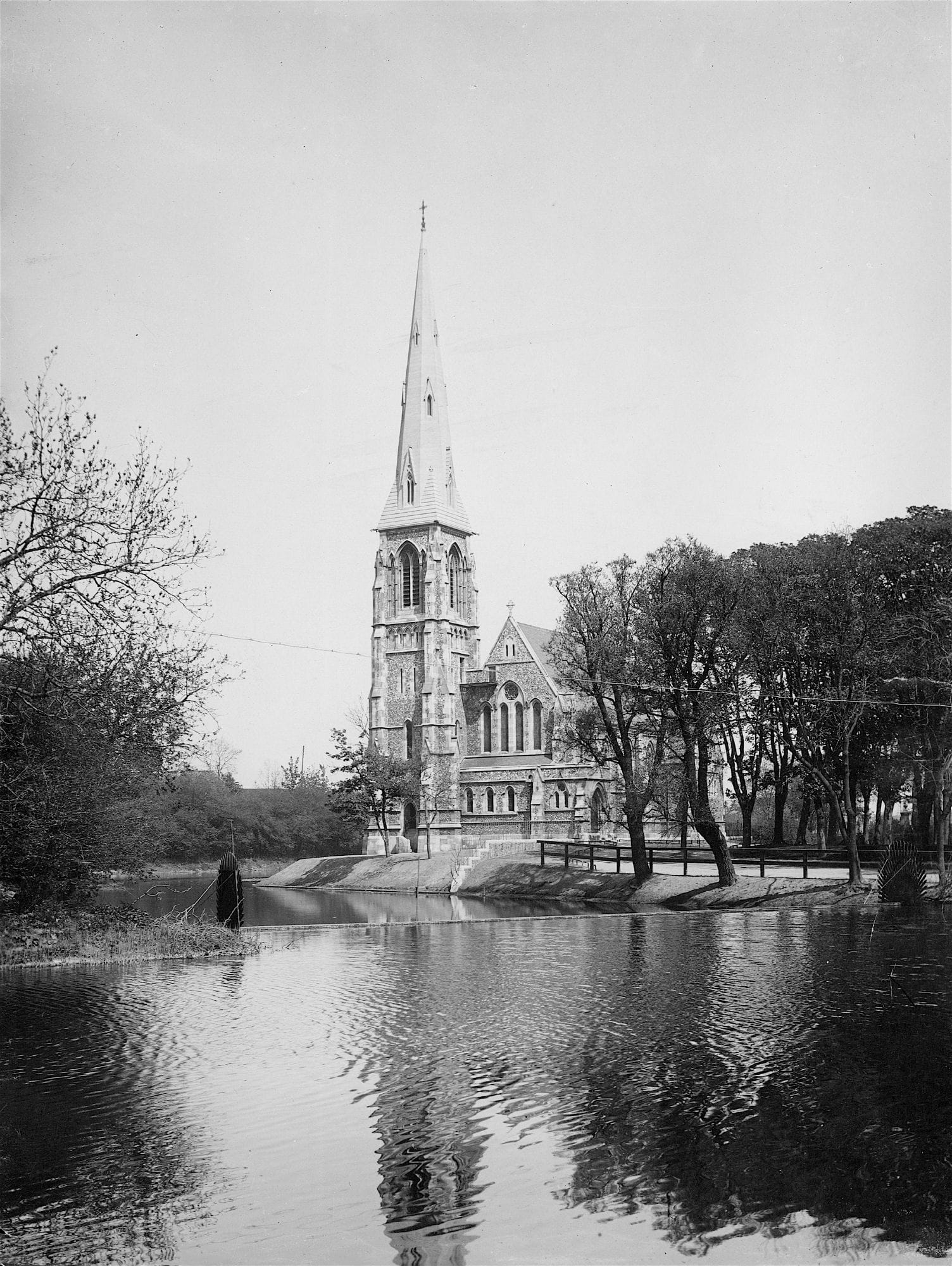
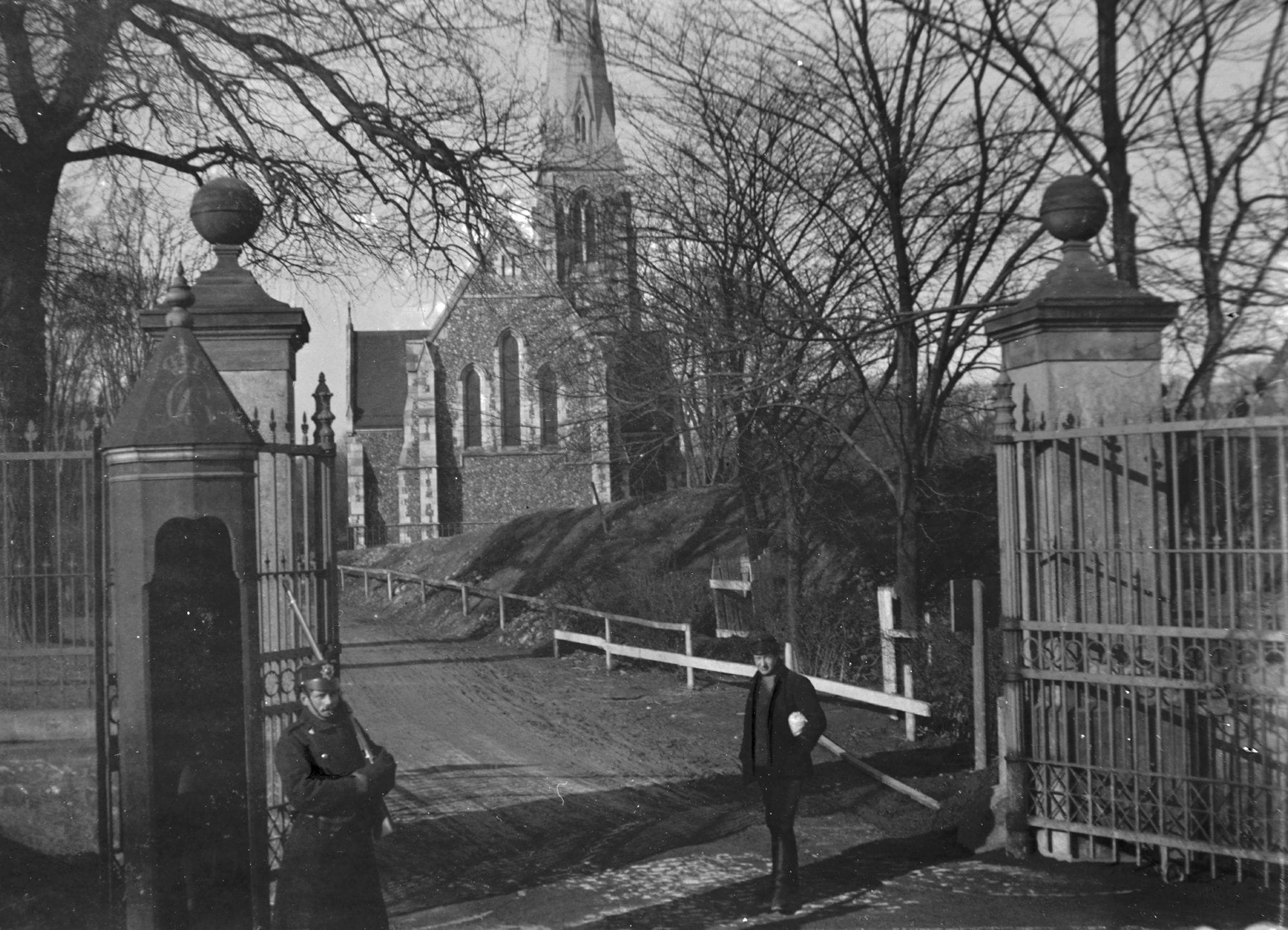
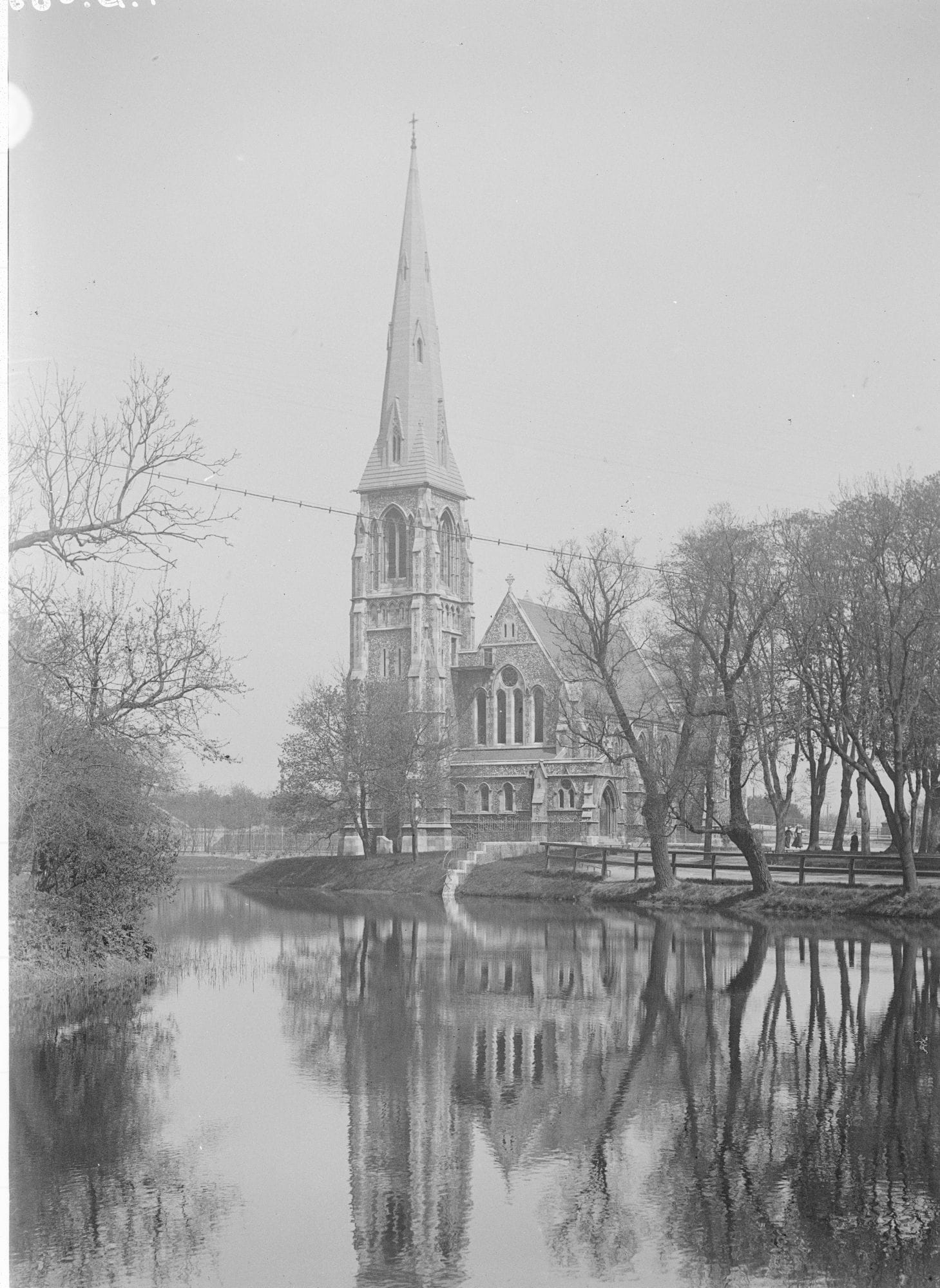
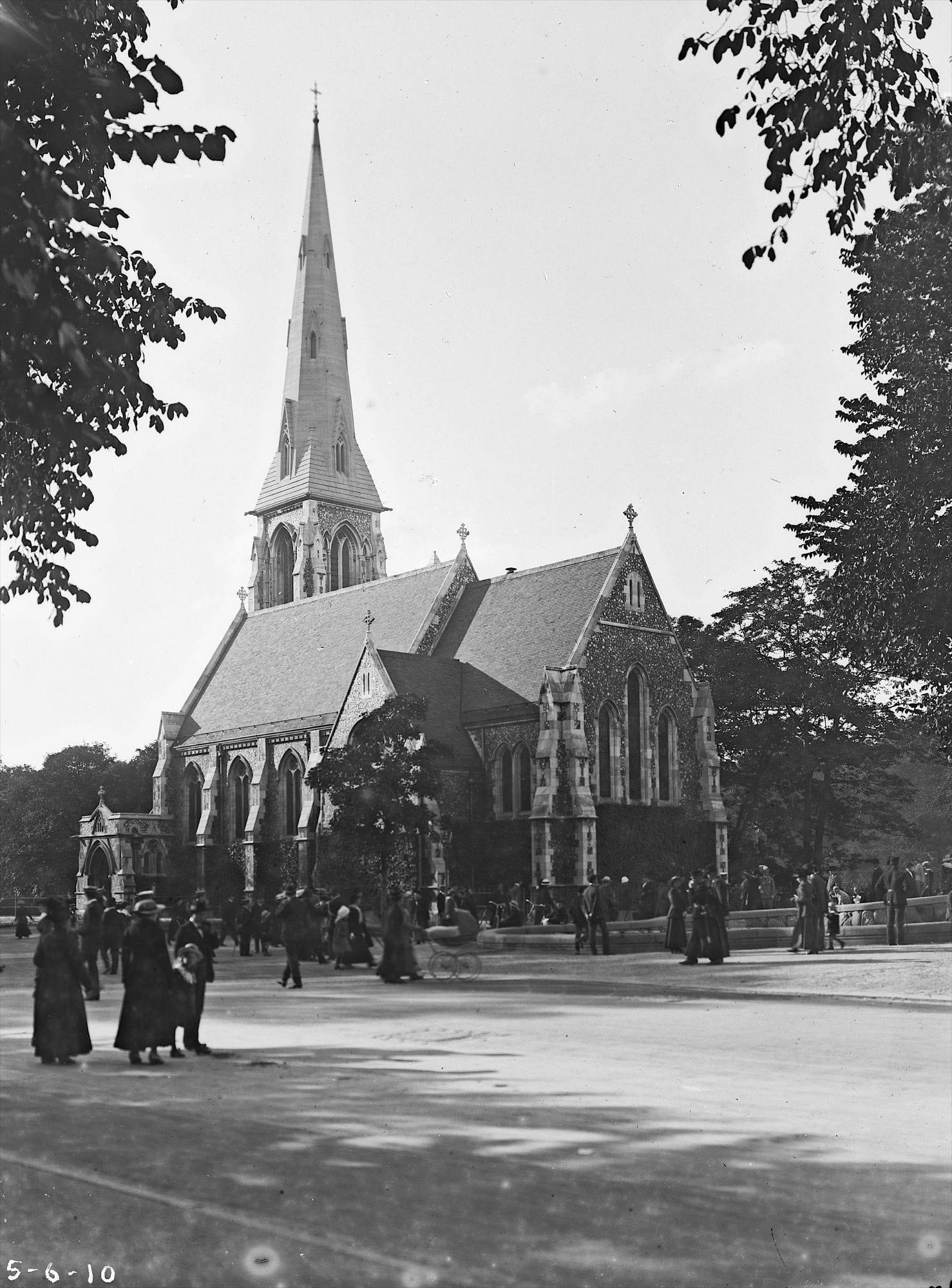
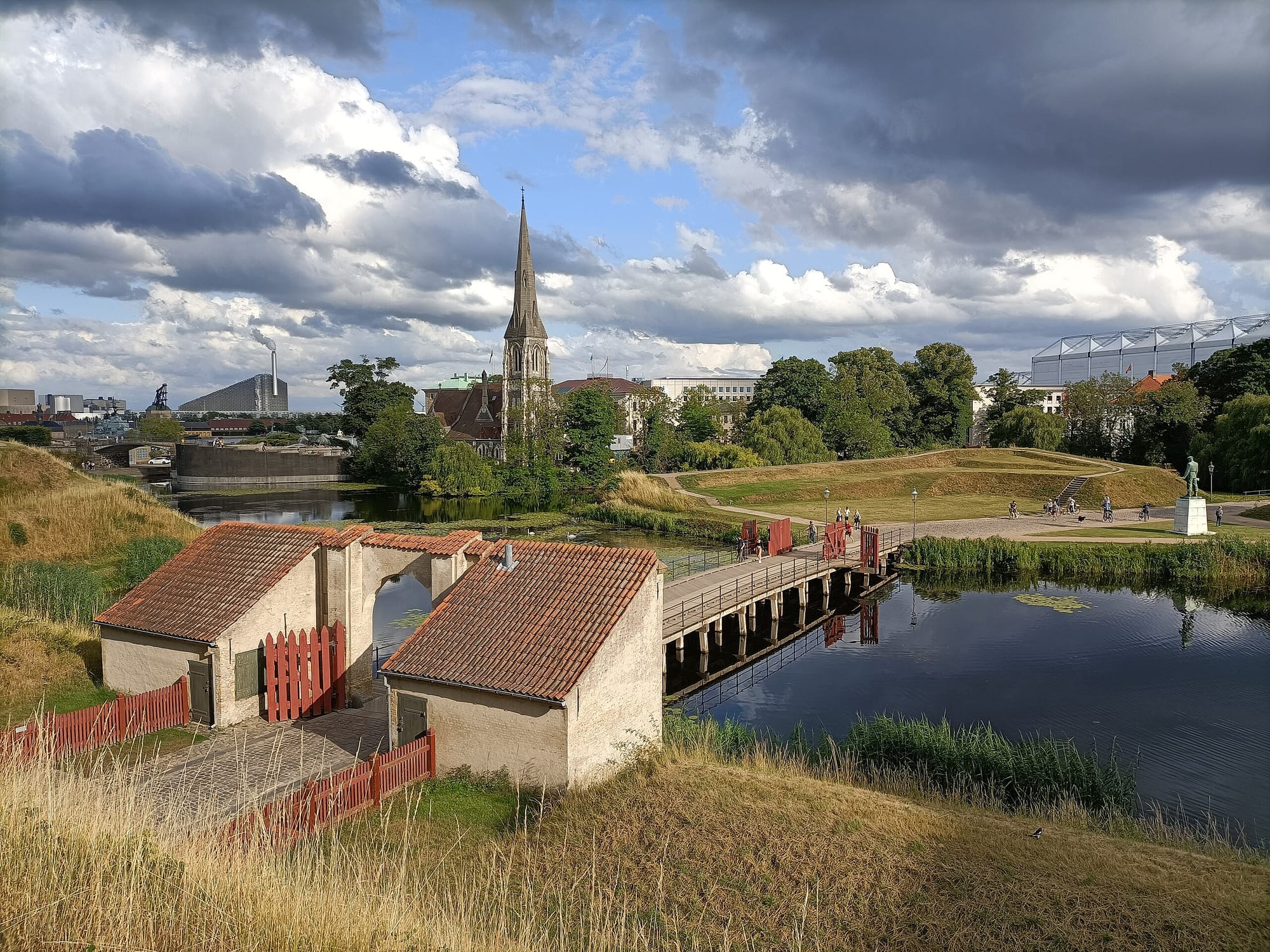
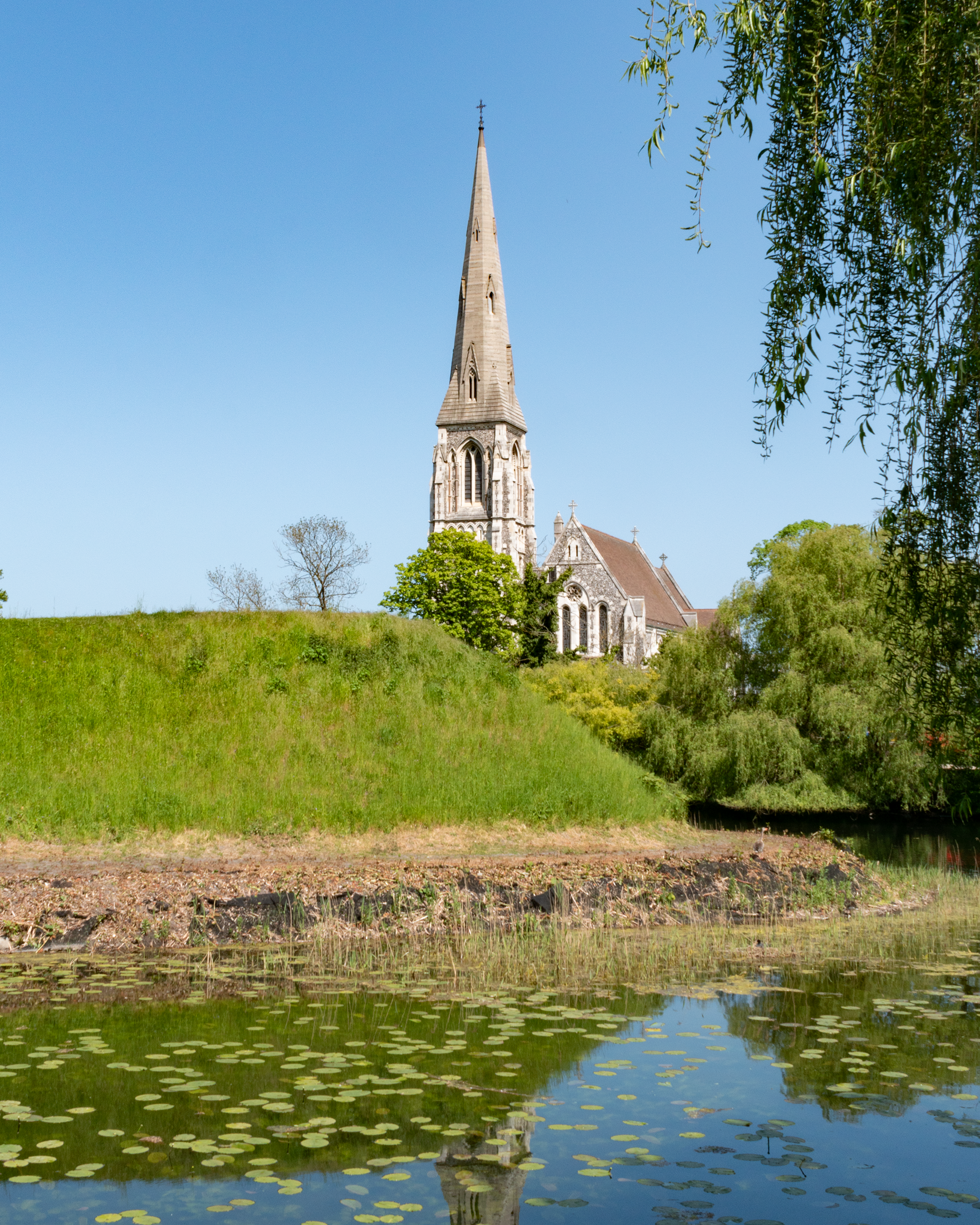
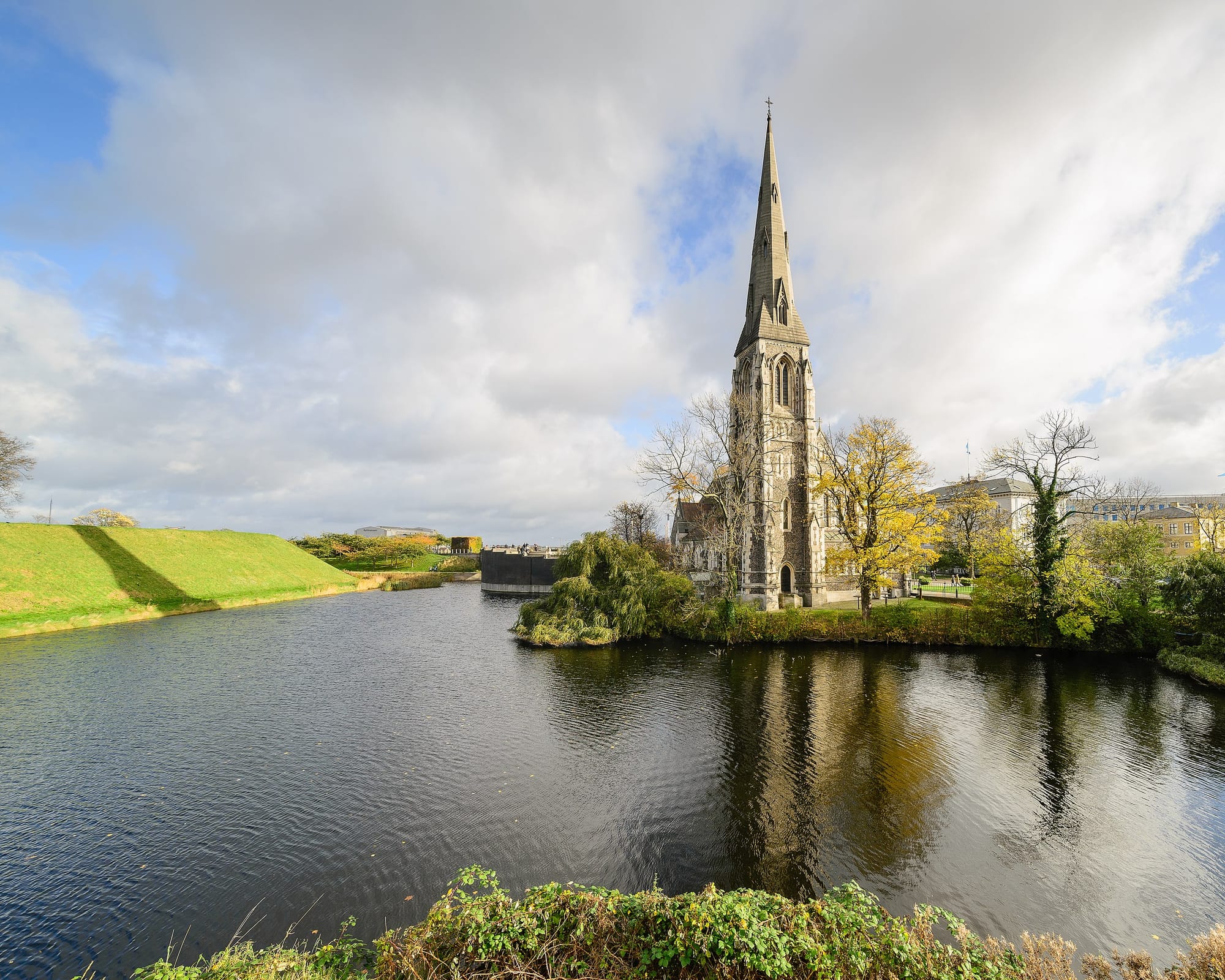
1890, the Museum of Copenhagen | 1895 with guard, the Museum of Copenhagen | 1903, Fritz Theodor Benzen, the Museum of Copenhagen | 1910, the Museum of Copenhagen | 2023, Wikimedia Commons | 2023, me | 2017, Arild Vågen, Wikimedia Commons
But other than those tiny changes, almost nothing, which is kind of wild—it’s right in the heart of a city that’s nearly doubled in population in between the publishing of the postcard and taking of the photo (...and so, honestly, not necessarily a good thing).
Besides swapping out absolute monarchy for the constitutional kind, the Danish Constitution of 1849 enshrined freedom of religion. While the Church of Denmark—Folkekirken—retained its dominant position as the state church, for the first time since the 1600s non-Lutheran churches were free to worship as they wished. The Anglicans were already here, though—maritime trade ties had long sustained a small English presence in Denmark, and the Anglicans were one of the first foreign denominations to win royal permission to openly practice their religion. By the 1830s they were holding services in a rented space down the street from here on Store Kongensgade.
The small congregation quietly puttered along until a royal marriage won them a powerful patron—in 1863, Princess Alexandra of Denmark married Queen Victoria’s eldest son, Albert Edward. What gesture would better tie together the Princess of Wales’ adoptive country and her birth country than Alexandra helping construct the first Anglican church—the international branch of the Church of England—in Denmark? Suddenly a congregation with clout, backed by a future British queen and the daughter of the King of Denmark, the congregation secured financing and this posh-but-peripheral site on Kastellet’s moat.
Not without some jockeying, though—Princess Alexandra’s dad, King Christian the IX, had other kids, including the King of Greece and the future Empress of Russia. The latter, Maria Feodorovna or Princess Dagmar of Denmark, had similar ideas about churchbuilding as a way to demonstrate dedication to her new subjects, and considered this site for Copenhagen’s Russian Orthodox Church. Paid for Maria Feodorovna’s husband, Tsar Alexander III, the Russians ended up half a kilometer away on Bredgade—a more fashionable location closer to the Royal Palace, but less picturesque.
To design their first (and still only) dedicated church building in Denmark, the congregation hired English architect Arthur Blomfield, a prolific ecclesiastical architect and the son of an Anglican bishop. While Blomfield designed dozens of churches across the British Isles, this is one of only a handful he did overseas.
With architect Ludvig Fenger supervising in Copenhagen, they dropped an English parish church on the border of Kastellet. Limestone and knapped flint from Denmark, deployed in Gothic Revival, they even imported roof tiles and interior furnishings from the UK—this is truly den engelske kirke.
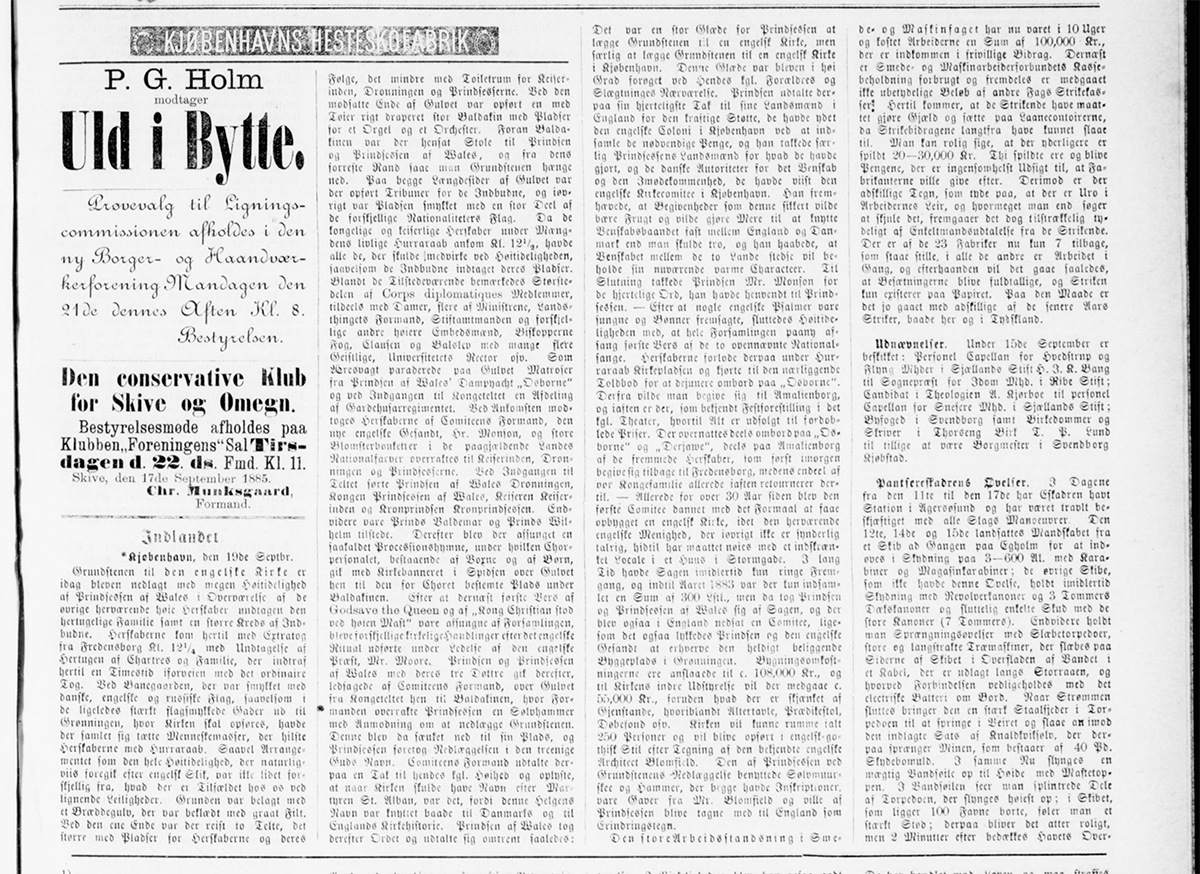
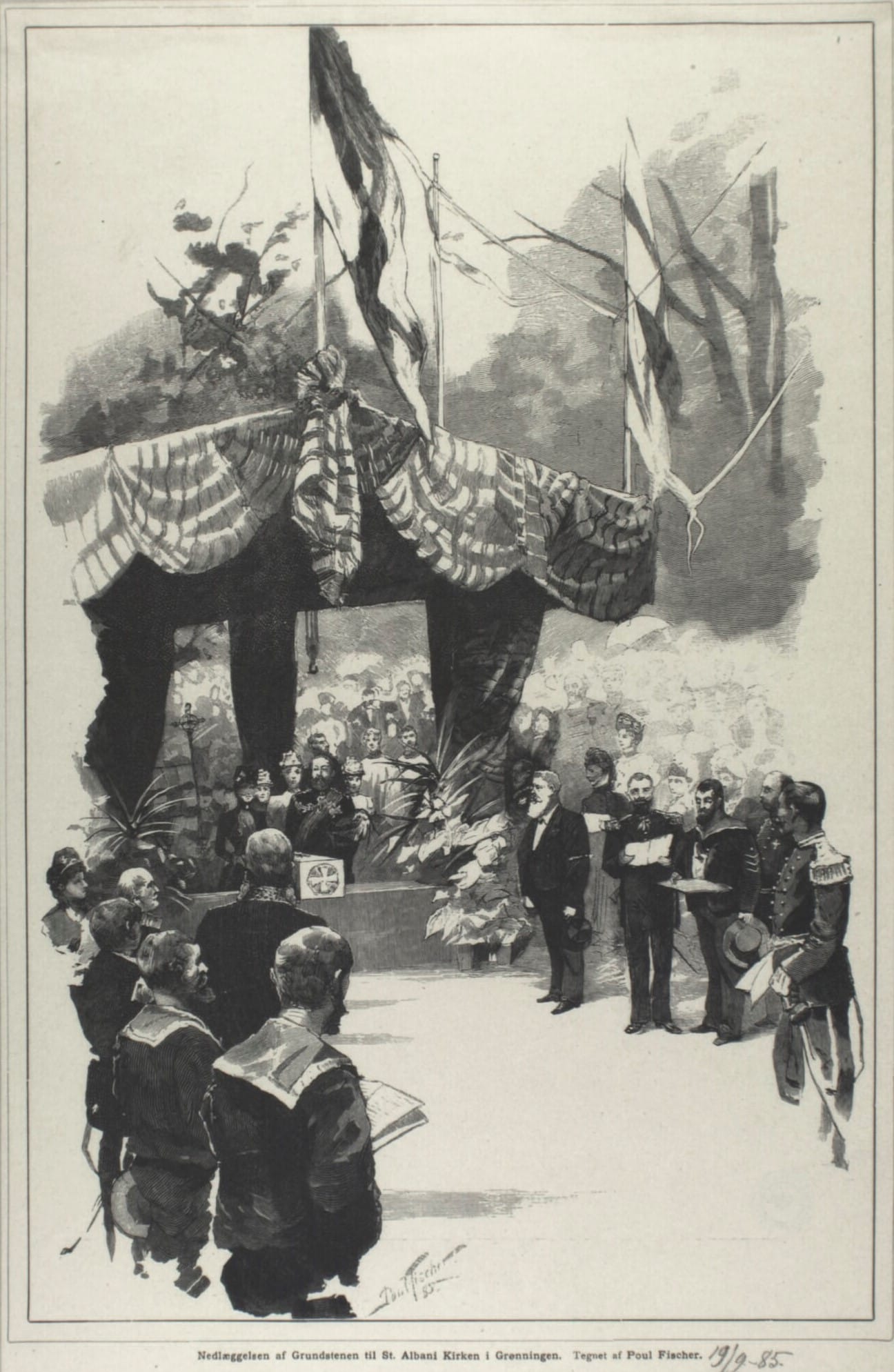


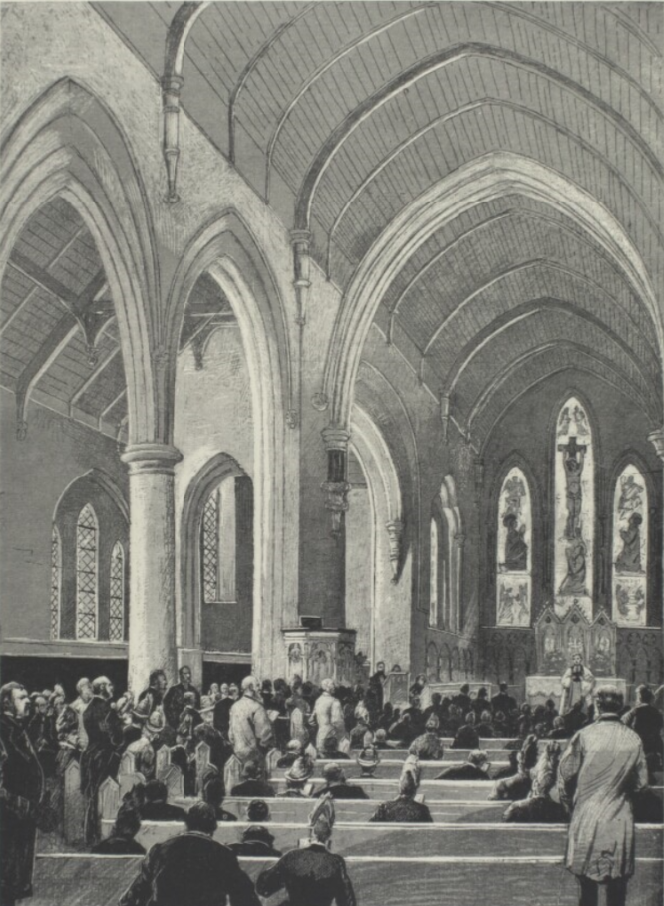
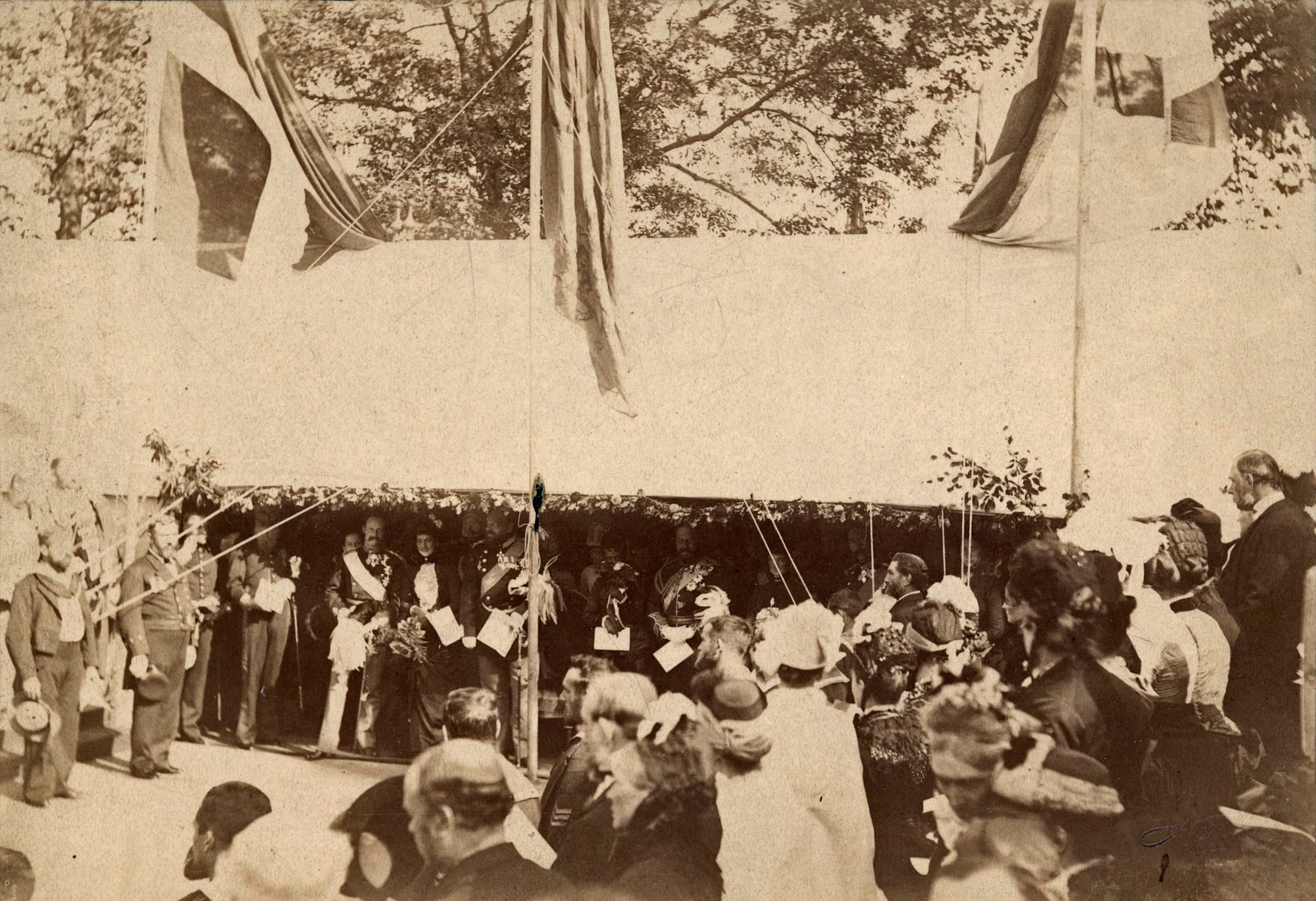
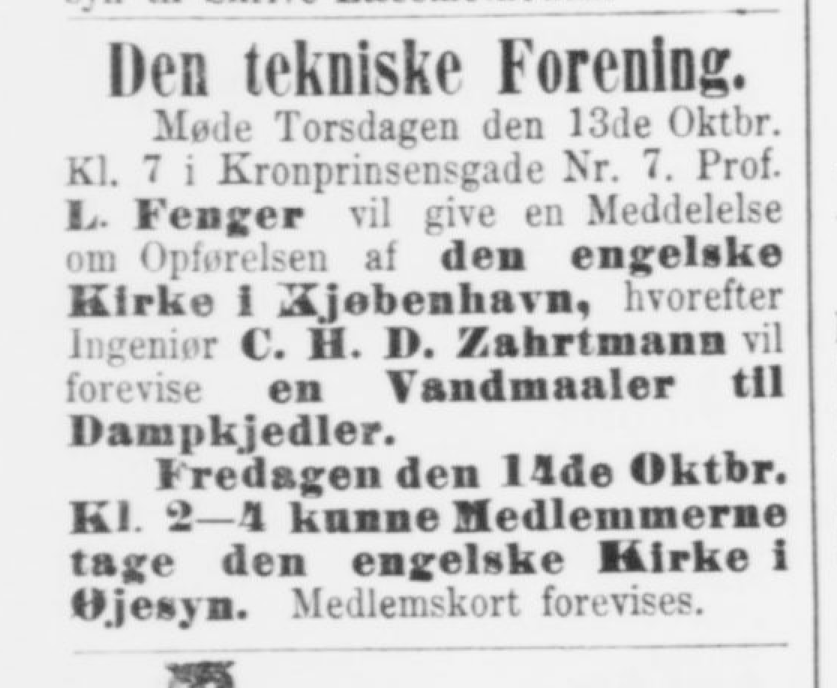
1885, cornerstone laying | 1885 cornerstone laying sketch, Paul Fischer, Wikimedia Commons | Sketch, Det Kgl. Bibliotek | 1887, Dedication | Interior, 1887, Wikimedia Commons | Dedication, 1887, Wikimedia Commons | Ludvig Fenger speaks about the English Church in 1887
The Princess of Wales and the Danish royals attended the cornerstone laying in 1885, and the church was dedicated in 1887. The church, understandably, had an international bent—I chuckled when I saw that it held a memorial service after President Warren G. Harding died in office in 1923. Two years later, they'd hold a more meaningful memorial when their patron, Queen Alexandra, died in 1925.
Popular for weddings, the church still conducts weekly English-language services today. It was restored in the mid-2010s.
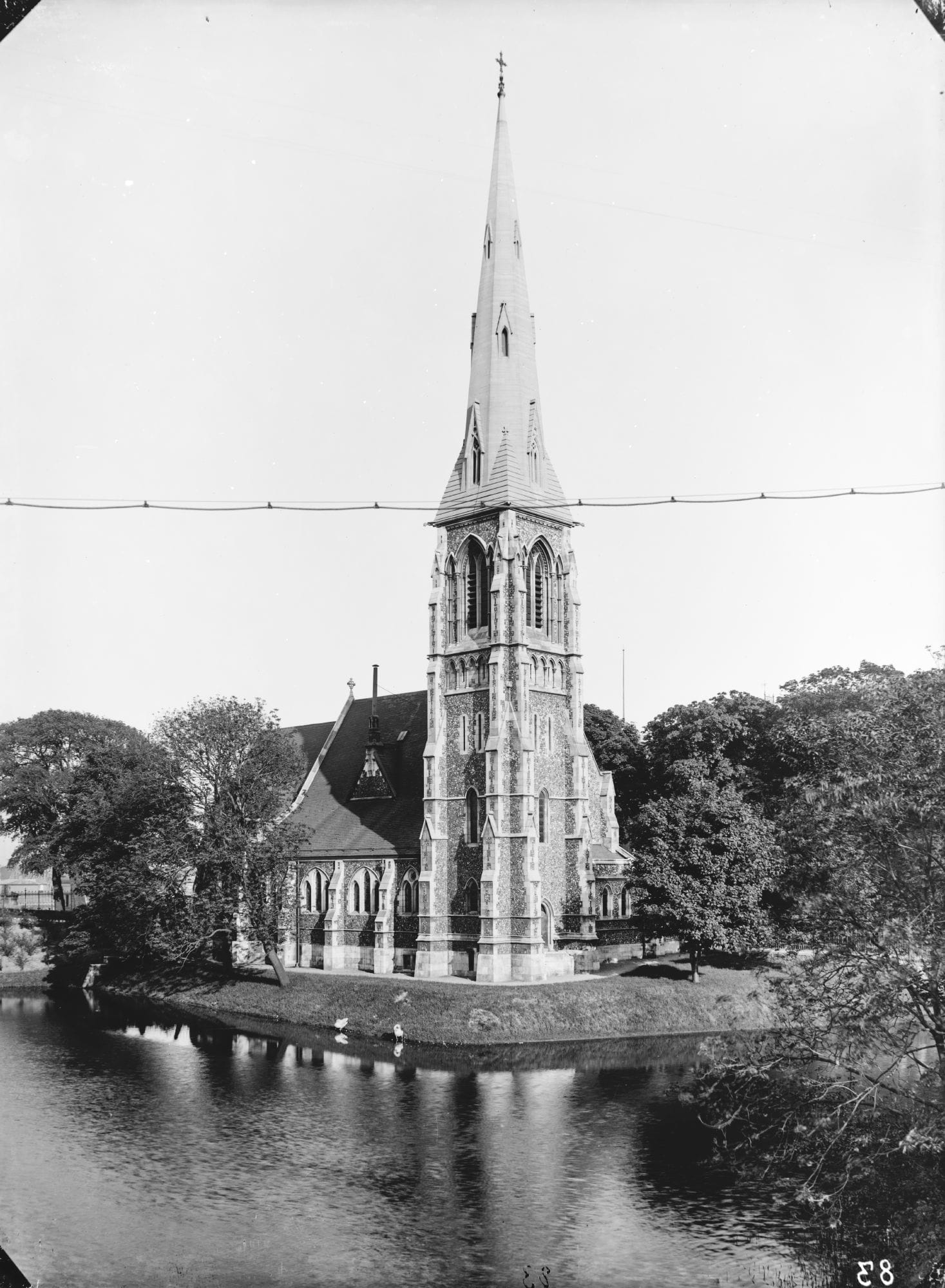
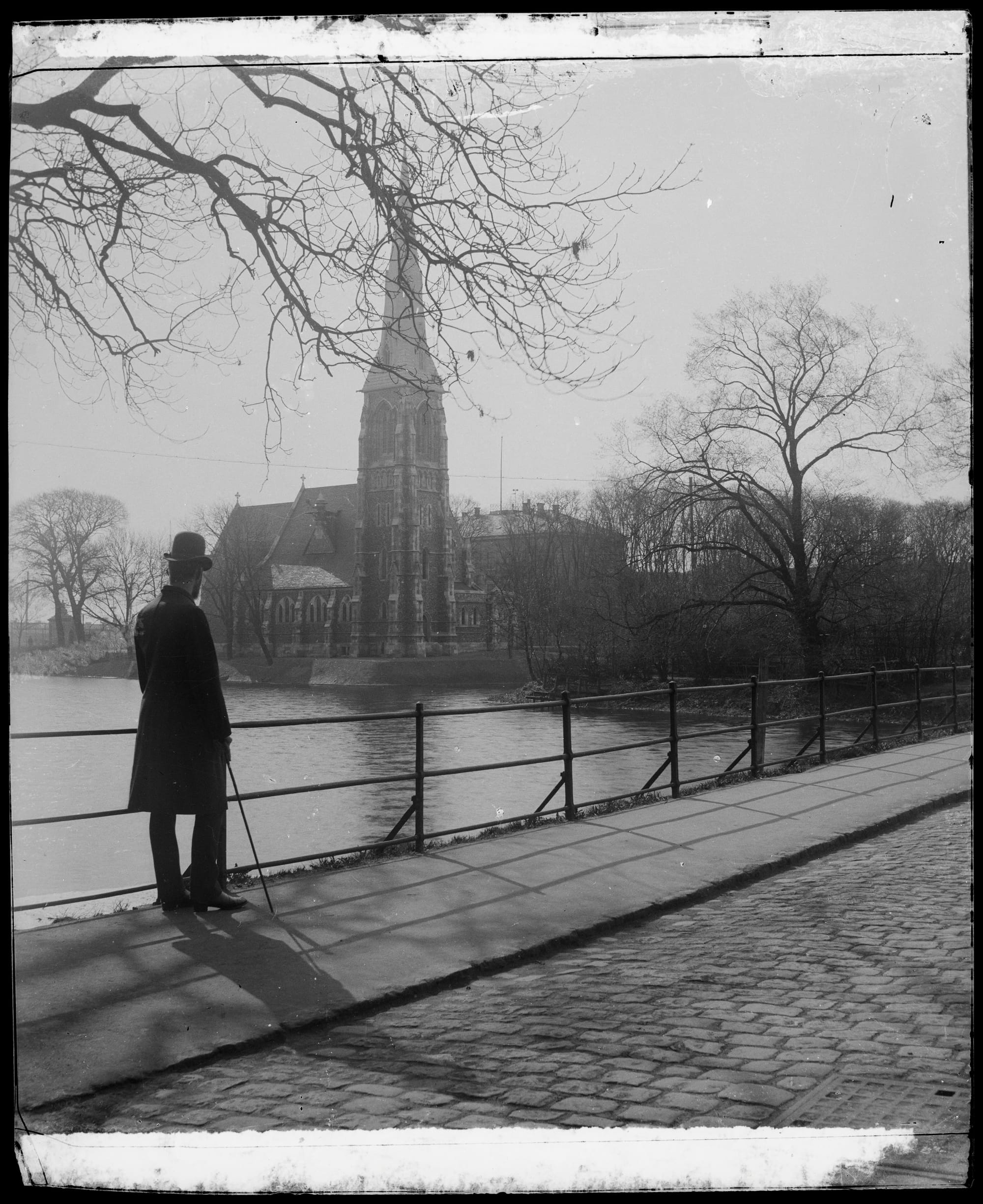
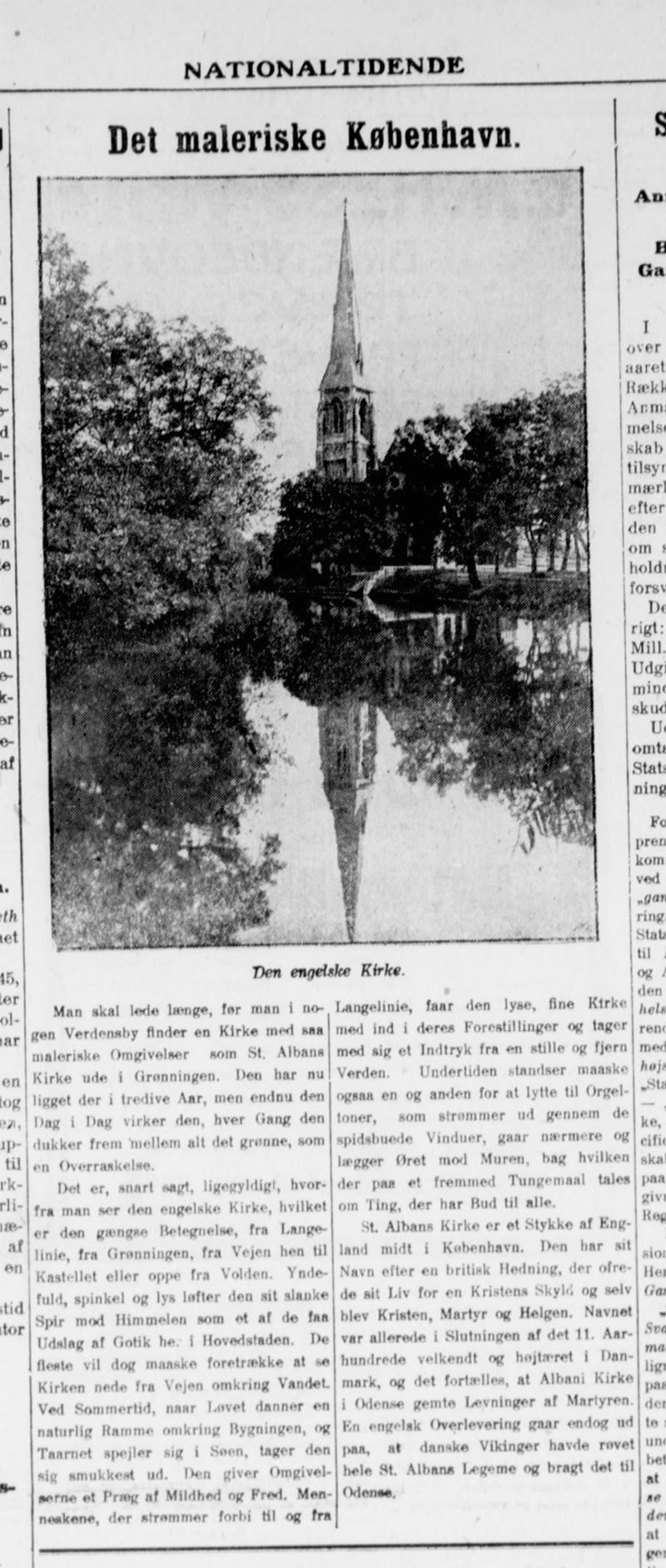
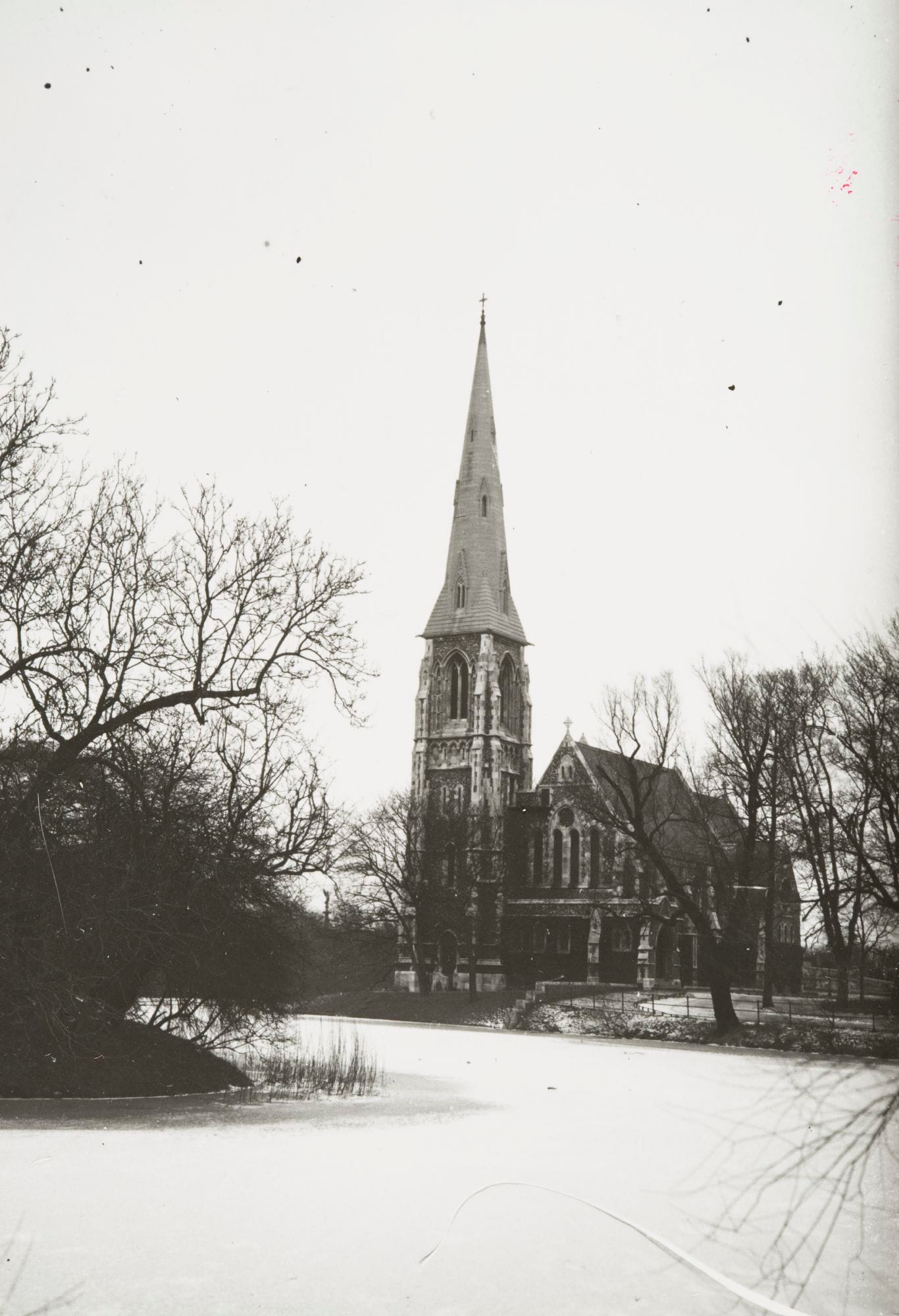
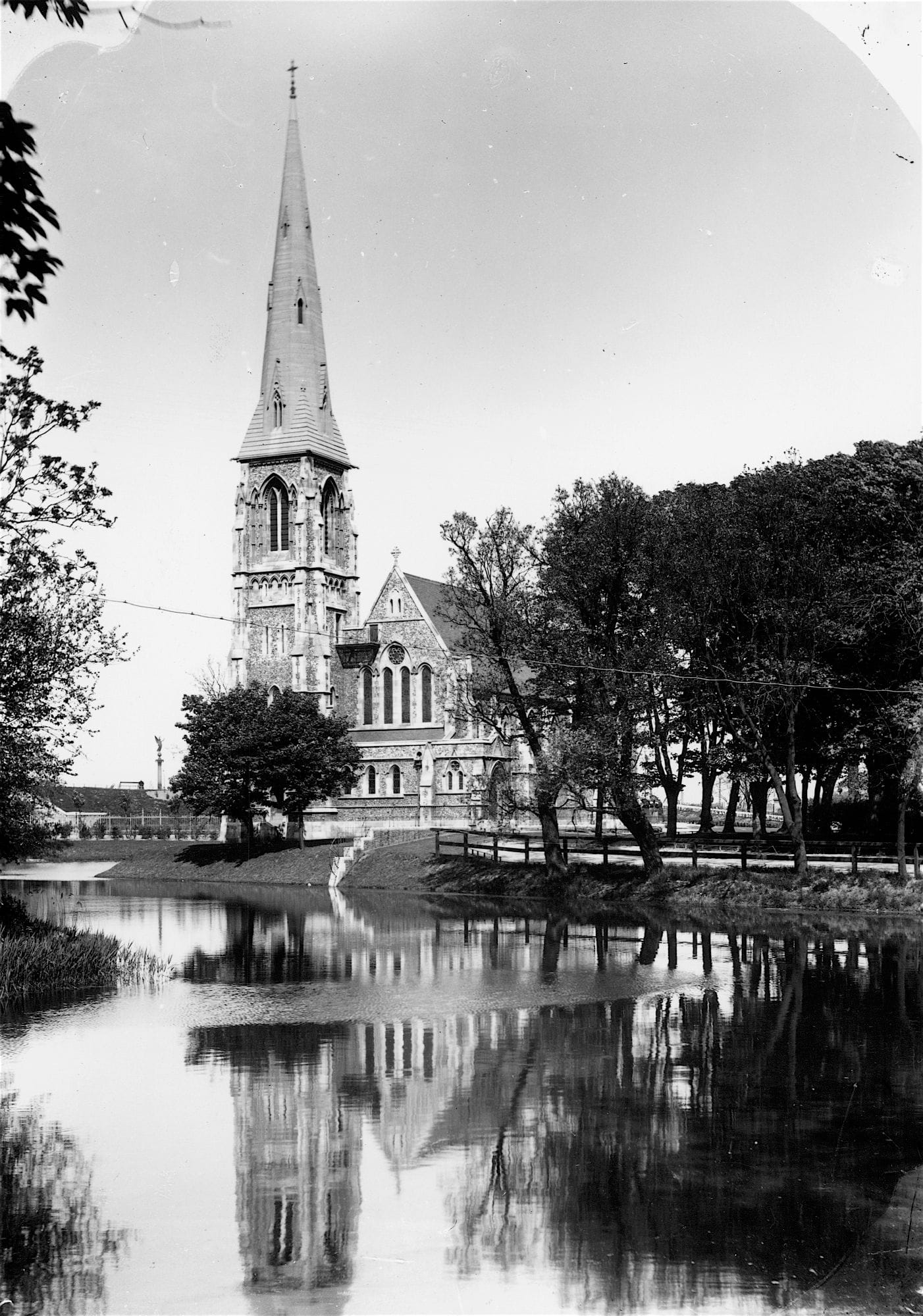

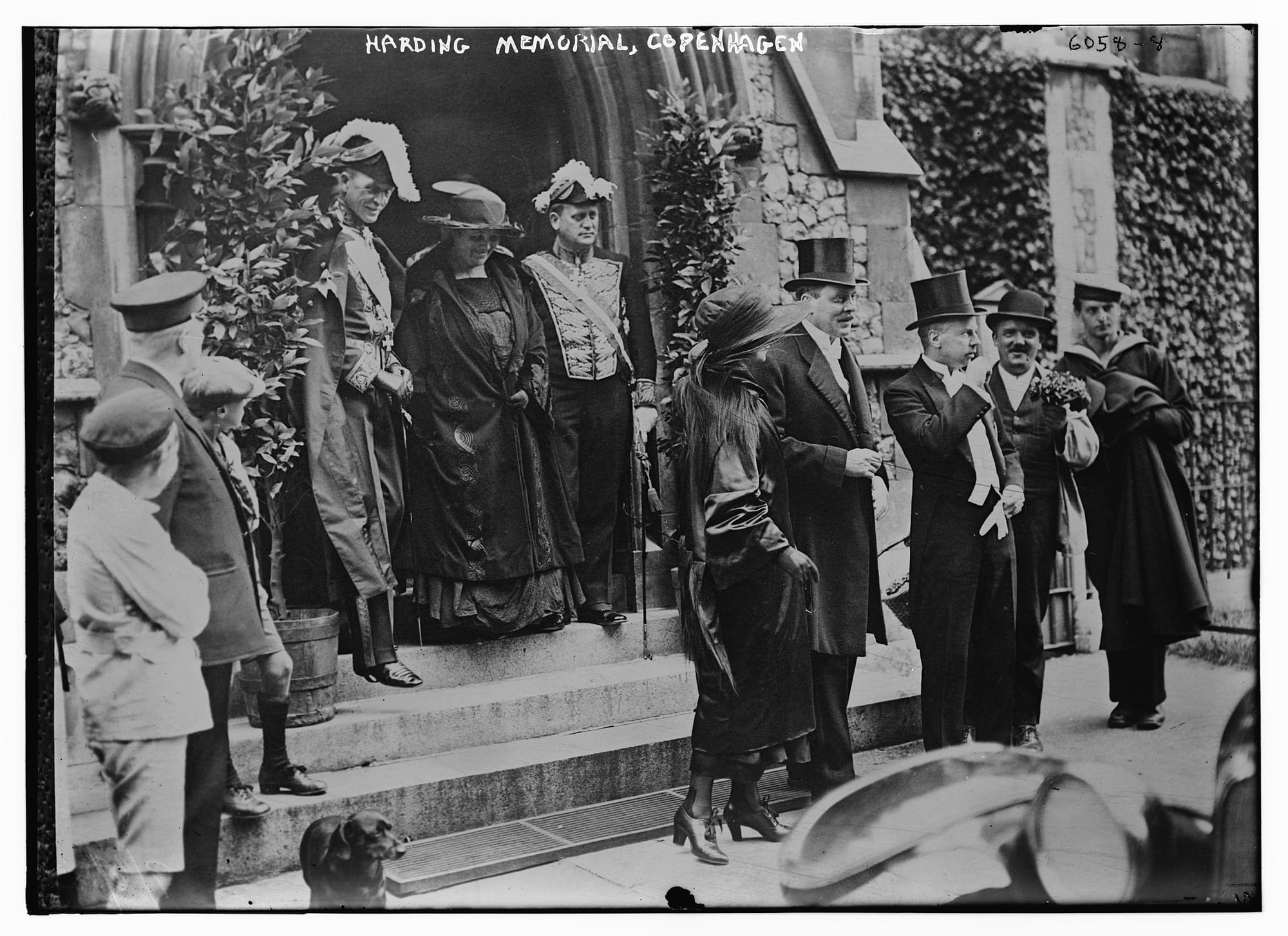

Christian Rasmus Neuhaus, the Museum of Copenhagen | Man with hat, Lars Peter Elfelt, Det Kgl. Bibliotek | "The painterly Copenhagen", 1917 | Moat iced over, Paul Fischer, the Museum of Copenhagen | Frederik Riise, the Museum of Copenhagen | Street scene, Lars Peter Elfelt, Det Kgl. Bibliotek | Warren G. Harding memorial, 1923, Wikimedia Commons | 1925, Queen Alexandra memorial
Production Files
Further reading:
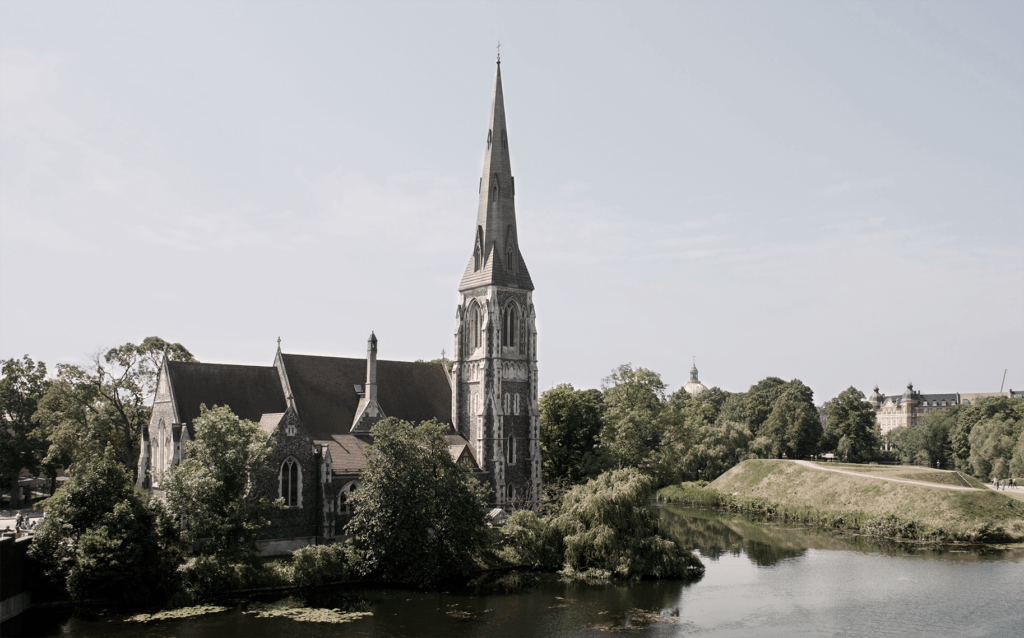
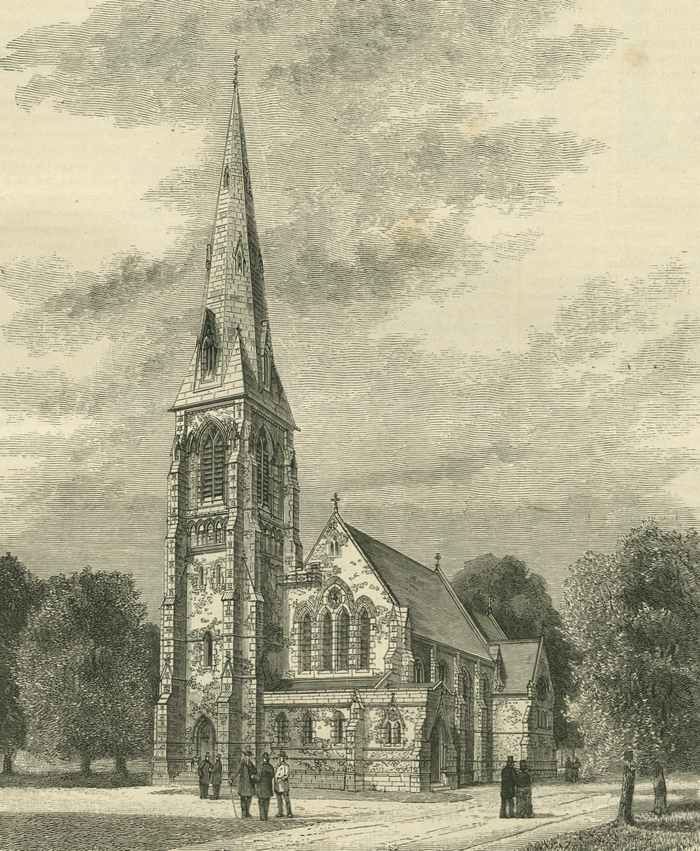
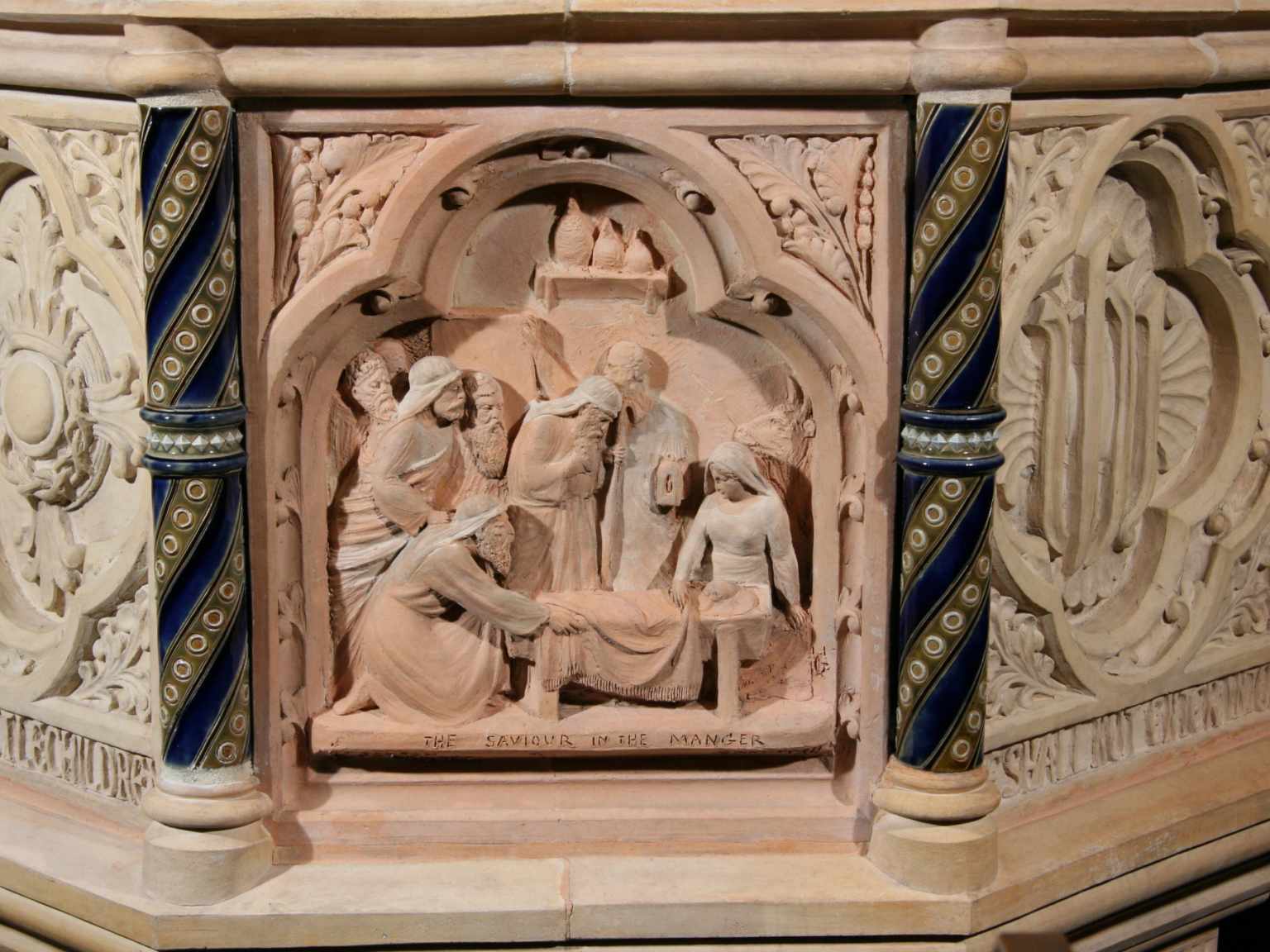
I took the first two in 2023 or 2024, realized I didn't get the right vantage point (because it was completely overgrown) and had to retake it in 2025.

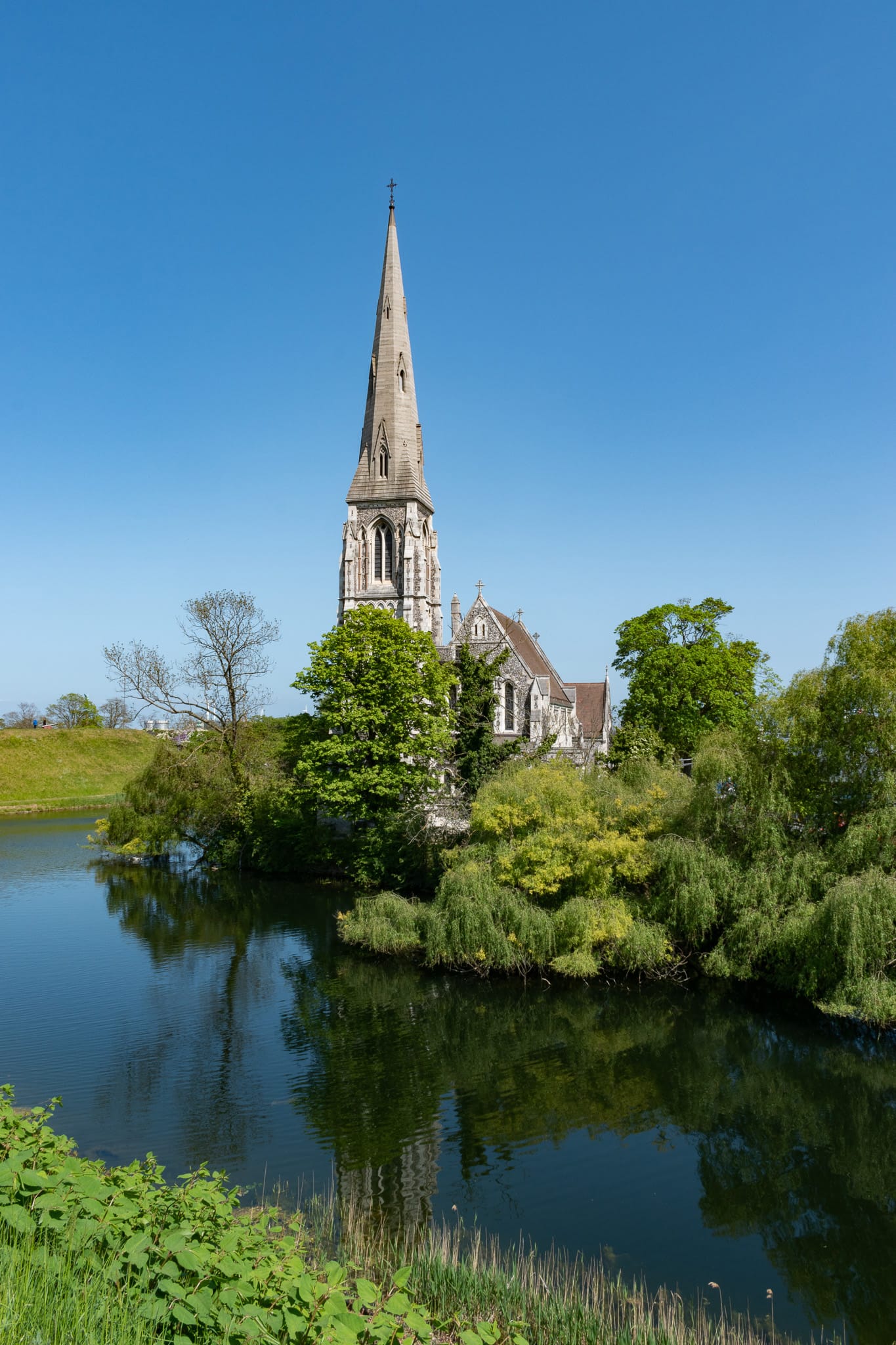
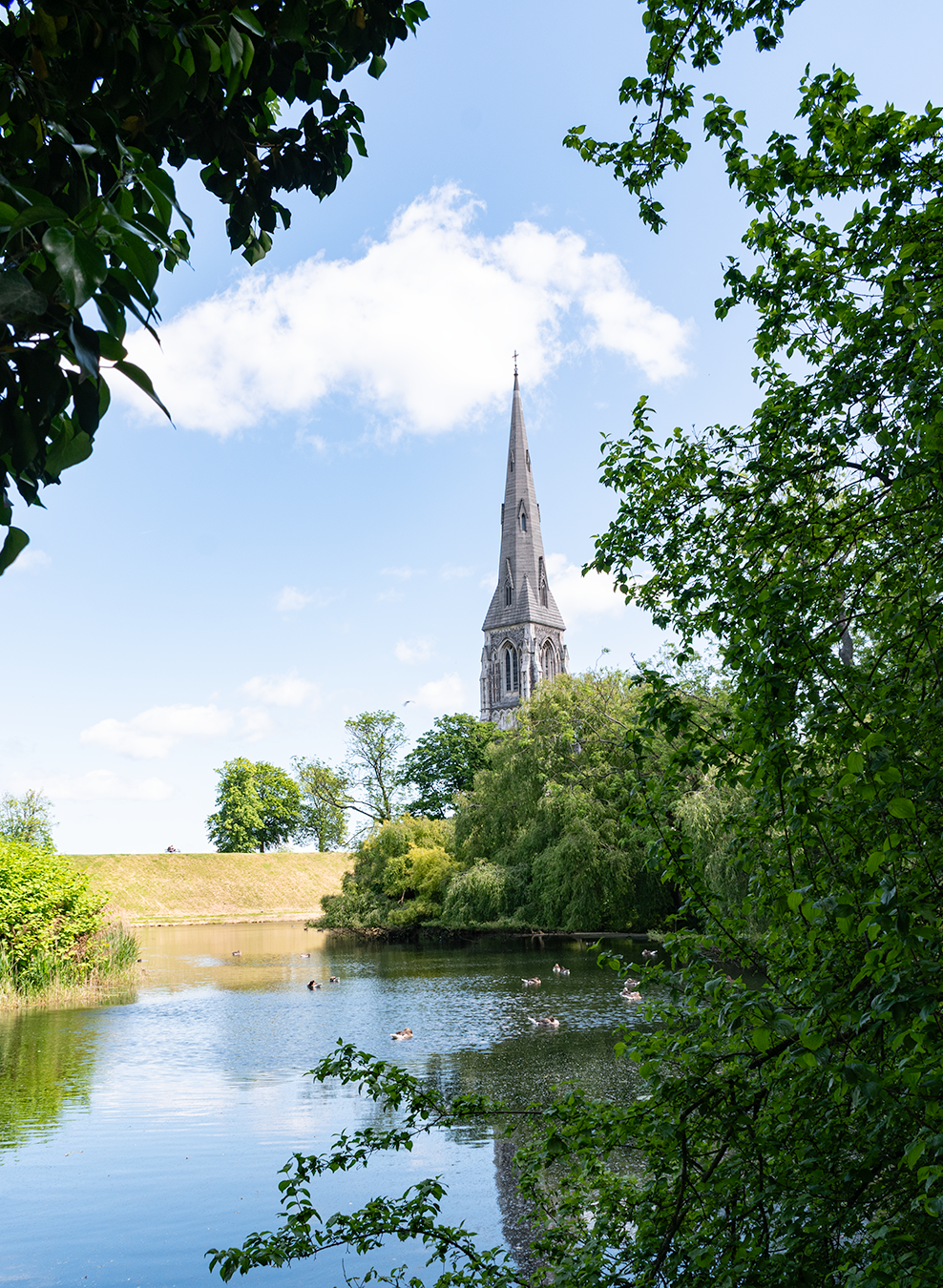
2023 photos from two different vantage points | 2025 photo from the right now
...I missed it the first time because I had to crawl down this moat bank like a real weirdo. This is where I took the correct photo from.
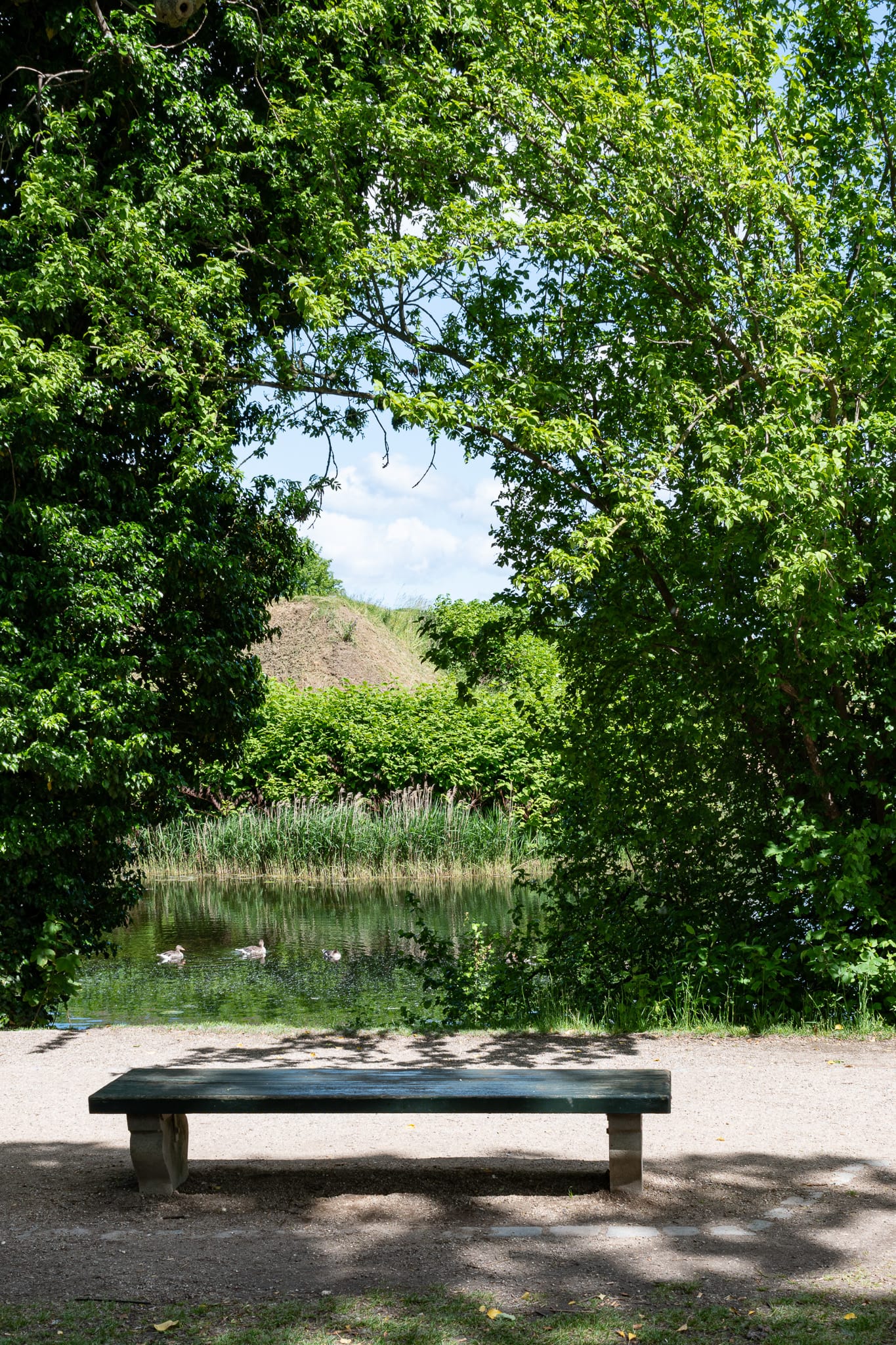
I really don't know what the deal was with this little dam, which was gone by the early 1900s.

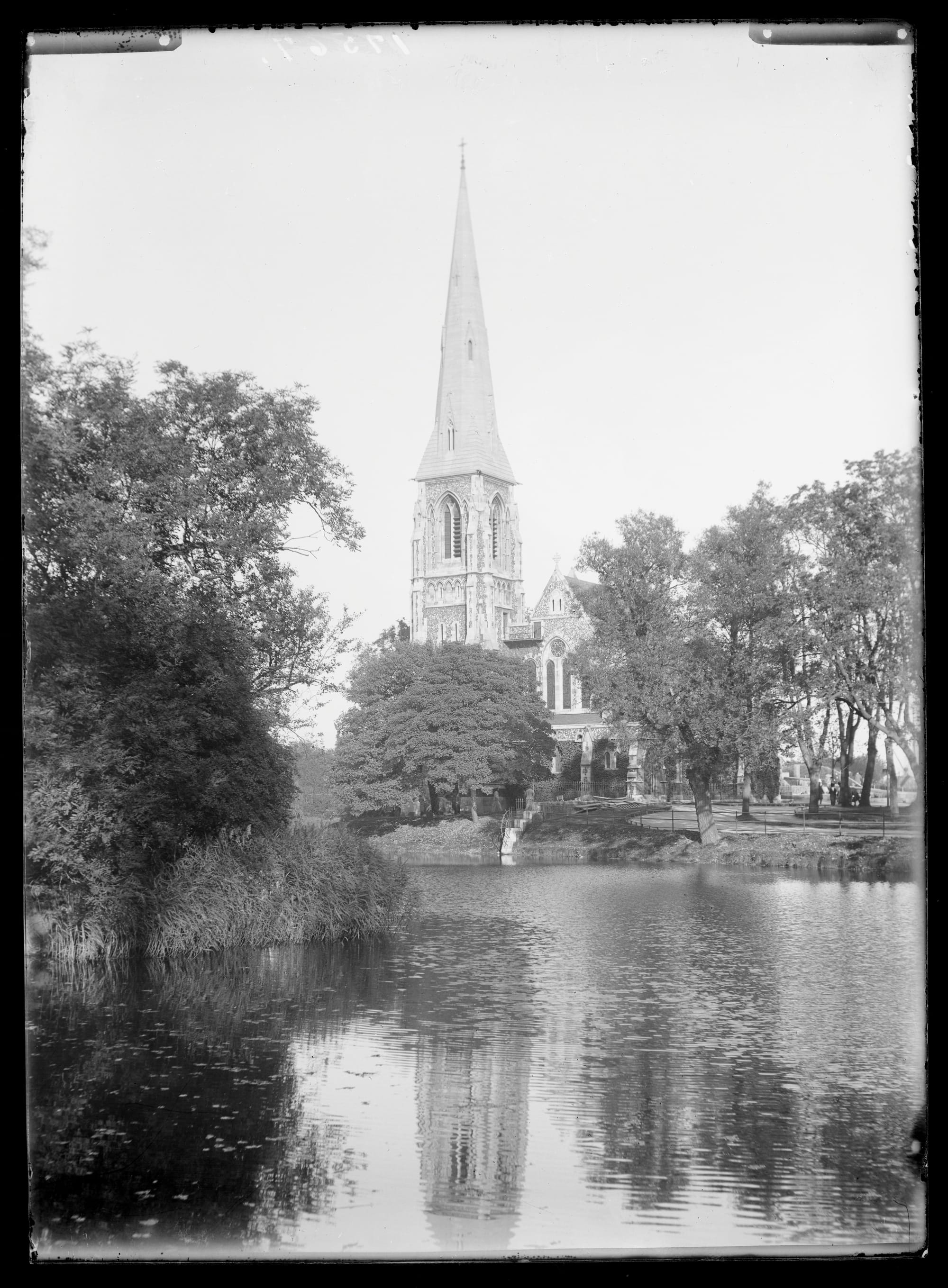
Emil Stæhr, Det Kgl. Bibliotek | 1918, Lars Peter Elfelt, Det Kgl. Bibliotek


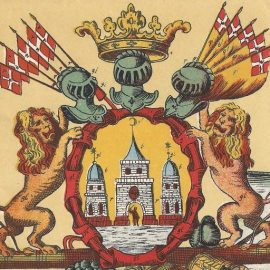

Member discussion: